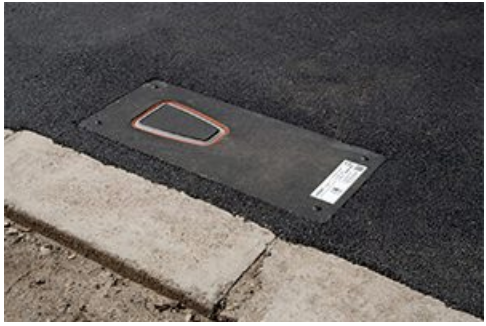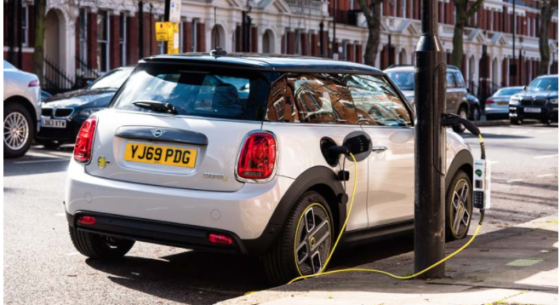Blog
The Bright Future of EV Charging
August 6, 2021
Post Author

Electric vehicles and EV charging systems have come a long way since the conception of the very first electric vehicle in the early 1800s—and they’re still evolving. Innovations in charging location, source, and methods continue to increase efficiency and ease of consumer experience, allowing for a more electrified world than ever before.
A concern of many electric vehicle owners is charging their vehicle, since charging stations are scarce in some areas and may not be available when needed. Further, charging stations are often found in parking lots and driveways of residential homes, which could pose a problem in more urban areas that do not have the luxury of space. Below, we explore some new advancements in charging stations that provide ample charging opportunities to drivers and do not require as much space.
Wireless EV Charging Road
How far can an EV take you? With roads that can charge EVs while they drive, the sky’s the limit. In Tel Aviv, Israel, a tech company called ElectReon built the first EV charging road in the world (pictured above). This supercharged road, fitted with electric coils under a layer of asphalt, transfers energy to the electric vehicles above and keeps them charged as they drive.
Researchers at Cornell University are working on a similar road for the US, but instead of coils, they are utilizing metal plates under a specified “charging lane” for drivers to switch into when they need some juice. With these roads, drivers could spend more time actually driving and car manufacturers could even shrink the size of the batteries in the EVs, since there would be frequent charging opportunities.
Pop-up Pavment Charger
EV charging stations are a necessity for all EV drivers. However, for some drivers without driveways, every inch of space matters. What better way to save space than to hide charging stations in the ground? Connected to a smartphone app, these whack-a-mole like charging ports pop up when summoned by the smartphone user and retreat back into the ground after the charging session. This could allow many urban drivers to switch to electric.
Lamppost Charging
Another location that could be a great hiding spot for charging stations is lamp posts and other street lights. Instead of creating a whole new pole to attach the charging box to, why not use pre-existing poles? Especially handy for areas lacking parking lots and driveways, these sleek chargers provide charging access to many while preserving the area’s aesthetic.
Mobile Charging
Traveling off the grid? Mobile chargers, similar to a power bank for cell phones, are a convenient and compact solution to those that are planning a trip away from nearby charging stations, or even for those who want to travel with some backup juice.
Two EV charging companies, SparkCharge and FreeWire, have already come up with a lightweight and commutable Level 2 charger on wheels. These 3.5kW chargers, available in a variety of sizes, can supply the typical EV with about a mile of range per minute—providing the driver with an excellent safety net in the case of emergencies.
In addition to a myriad of incognito chargers, improvements in charging methods and the batteries inside the cars can help EV drivers reach new destinations with a faster, more powerful charge. These are some of the changes happening to help avoid the “range anxiety” many drivers feel on a daily basis.
Self-heating Lithium-Ion Battery
A full charge at a level 2 charging station takes an average of 8 hours. However, with the introduction of the self-heating lithium-ion battery, charging an electric vehicle shouldn’t take any longer than stopping for gas. Penn State researchers are exploring advanced batteries that heat themselves up to around 140ºF to avoid the phenomenon called lithium plating that reduces battery capacity in regular lithium batteries. These self-heating batteries then quickly cool back down after charging, making them an extremely efficient and ideal electric car battery.
1000km Range Battery
Most electric cars are currently limited to around 400-550 kilometers (250-350 miles) per full charge. Switzerland battery technology company Innolith is working on a battery that more than doubles this range, giving drivers up to 1000 kilometers of range per charge. Innolith prides itself on using a “a non-flammable inorganic electrolyte, as opposed to the flammable organic electrolytes” used in common batteries. The company also cuts out the traditionally used “exotic and expensive” components in order to make the battery more cost-effective.
These innovations will not only provide sufficient charging in economically and aesthetically pleasing ways, but will also resolve range limitations and range anxiety. Advancing technology to solve these obstacles could open the door to more EV usage, paving the (wireless charging) road to a greener future.
As always, if you want to be a part of our nationwide peer-to-peer EV charging network, you can sign up today.











